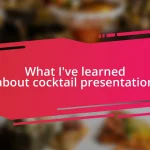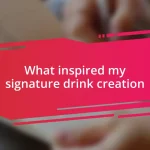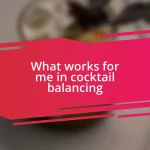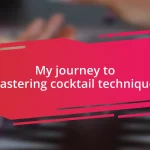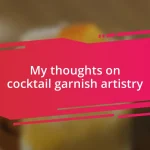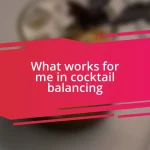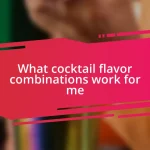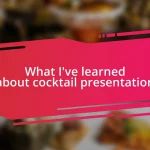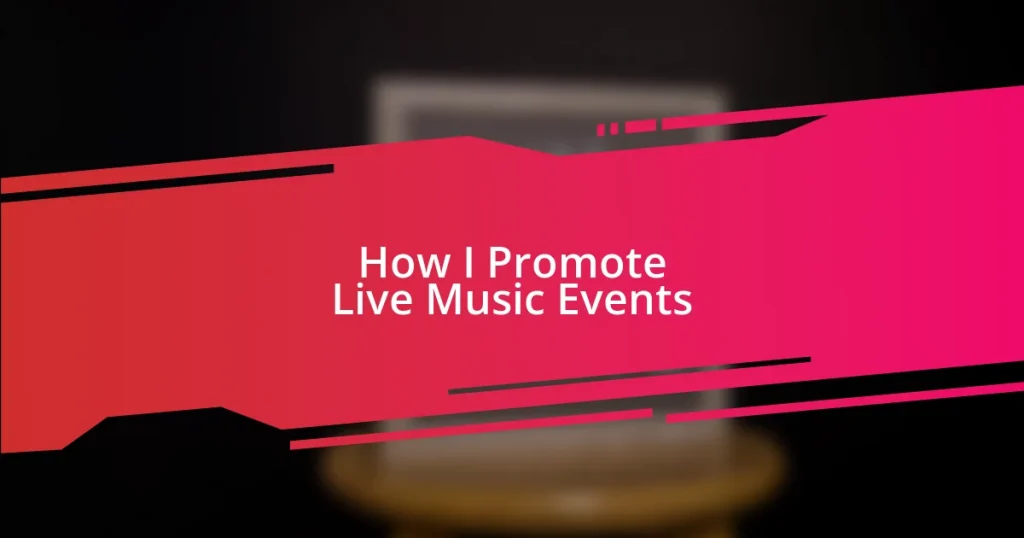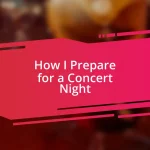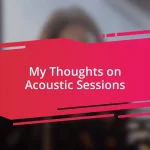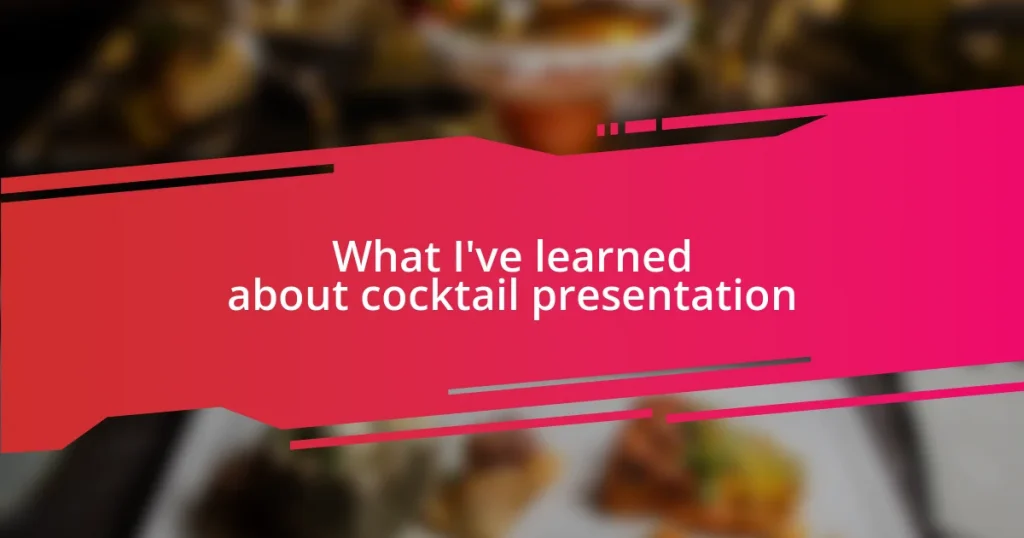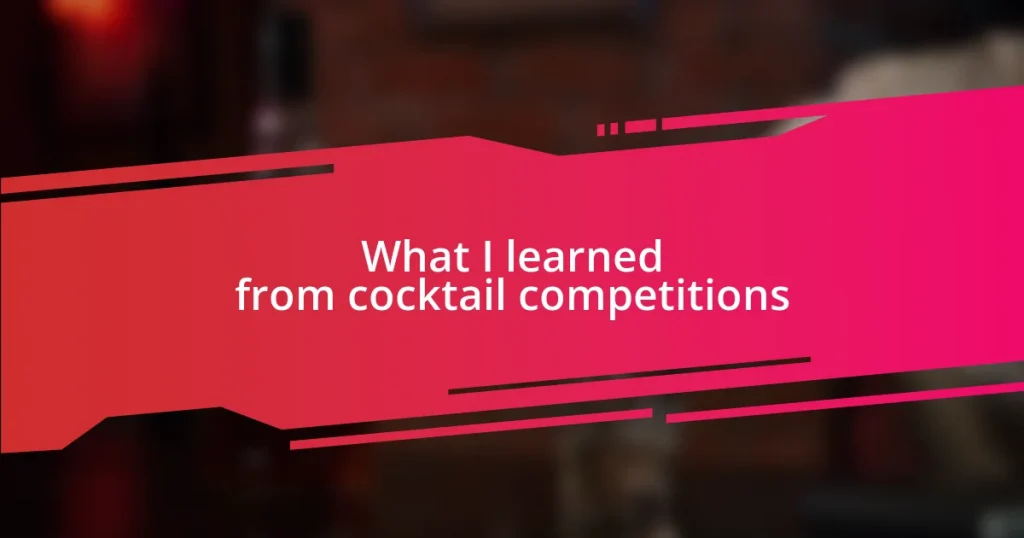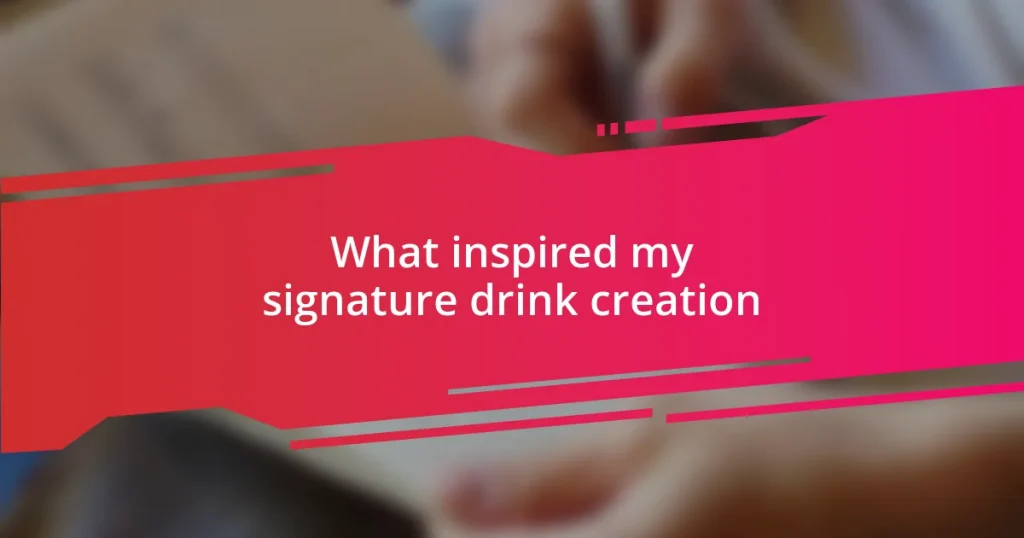Key takeaways:
- Utilize social media effectively for promotion by engaging audiences with captivating content and real-time interactions.
- Build community by collaborating with local businesses, artists, and influencers to create a supportive environment for live music events.
- Measure success through data analysis of ticket sales and audience feedback to continually adjust strategies for improved engagement and event experiences.
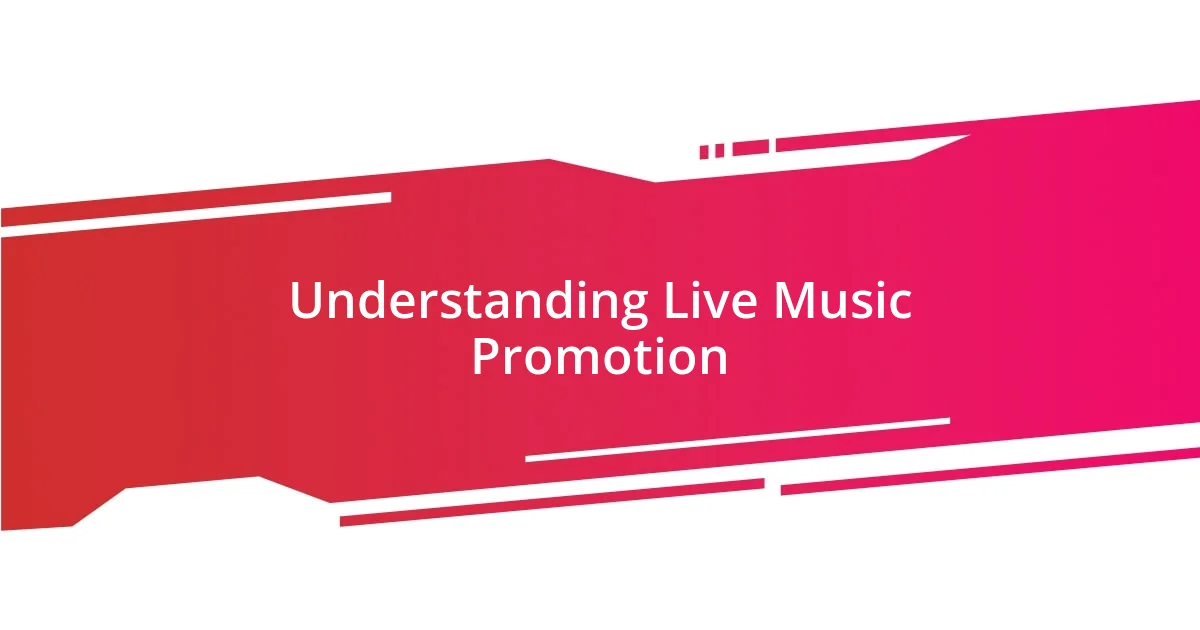
Understanding Live Music Promotion
Understanding live music promotion requires a blend of creativity and strategy. I remember when I first started promoting an indie band in my hometown; it was exhilarating but also overwhelming. Figuring out how to connect with the right audience felt like searching for a needle in a haystack. How do we ensure that the right people show up to experience the magic of live music?
One fundamental aspect of live music promotion is harnessing social media. I still recall the thrill of a Facebook event I created for that indie band; the notifications surging as people began to RSVP was an addictive rush. Engaging potential attendees with regular updates, behind-the-scenes content, and countdowns really catered to the excitement building up to the event. It made me wonder—how many of those attendees felt a personal connection to the band just from those posts?
Another crucial factor is collaboration with local businesses and influencers. Partnering with a local coffee shop not only provided promotion but also fostered a sense of community. I found that when small businesses get involved, it creates a ripple effect, drawing in their loyal customers too. Isn’t it fascinating how live music can unite different facets of a community?
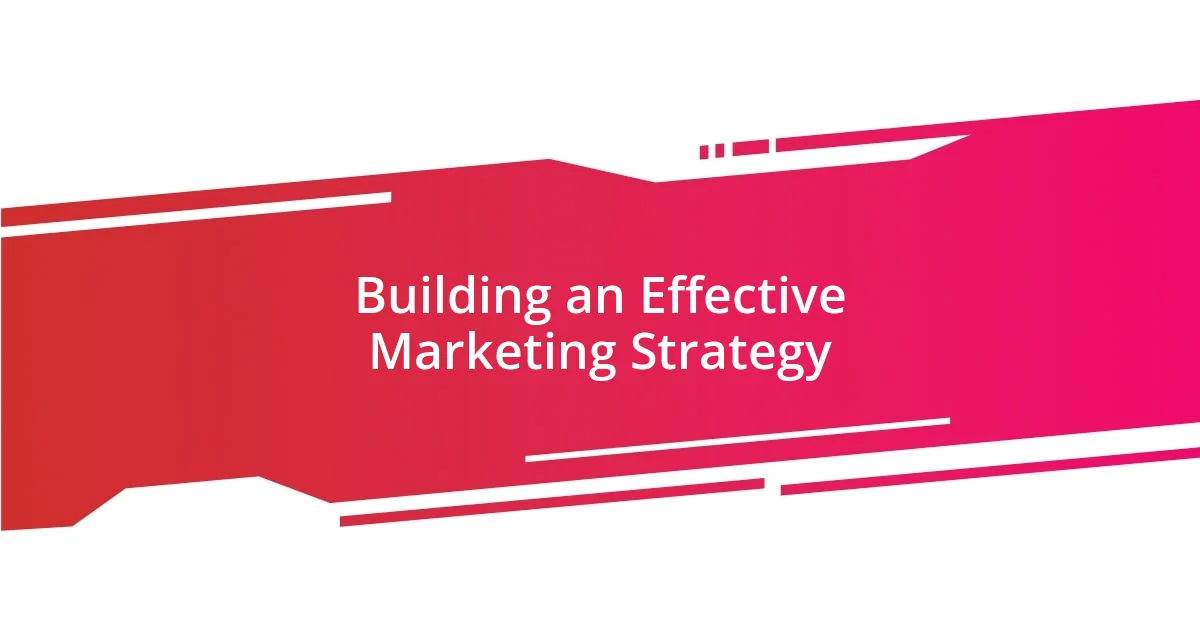
Building an Effective Marketing Strategy
Building an effective marketing strategy for live music events is all about understanding your audience. I recall a time when I meticulously crafted audience personas, trying to pinpoint who would resonate with a specific artist. It was enlightening; once I had a clear picture of who I was targeting, my promotional efforts became much more streamlined. This clarity allows for tailored messaging that speaks directly to their interests.
Here are some essential elements to consider when building your marketing strategy:
- Audience Research: Dive deep into demographics, interests, and behaviors. Knowing your audience is key.
- Engaging Content: Create content that captivates your audience. Think videos, stories, or behind-the-scenes peeks.
- Targeted Advertising: Utilize social media ads to reach specific groups. I once ran a successful ad campaign targeted at college students for a local gig; the turnout was fantastic!
- Partnerships: Collaborate with local businesses and influencers. It not only broadens reach but also fosters community goodwill.
- Event Feedback: Post-event surveys provide invaluable insights for future promotions. It’s a chance to learn and improve continuously.
The exploration of these elements can make your marketing strategy not just effective, but also personally rewarding, as you see your efforts come to life at an event.
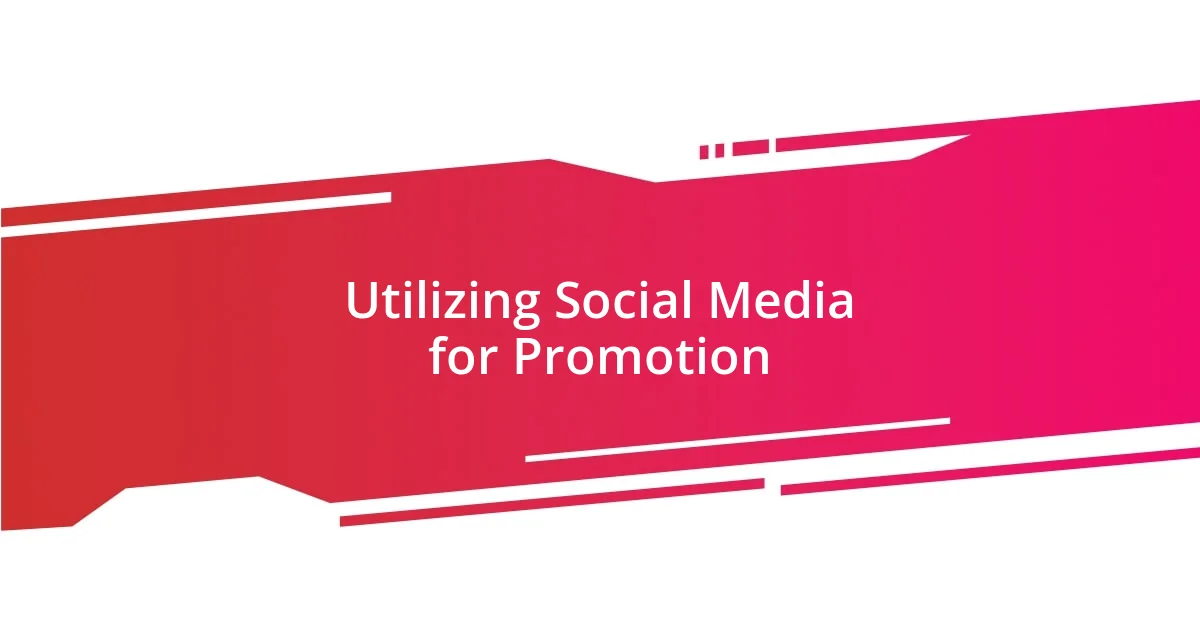
Utilizing Social Media for Promotion
Utilizing social media for promotion has become indispensable in my experience. I once launched a campaign on Instagram for a local jazz night, sharing stunning visuals of the band rehearsing. The excitement was palpable, with followers commenting and sharing, creating a buzz that I had never anticipated. It was rewarding to see how a simple post could ignite interest and connect fans with the artistry behind the performance. I often ask myself—how can we create that same magic for every event?
Engagement is key when promoting events on platforms like Facebook and TikTok. I remember live streaming a rehearsal session once and connecting with fans in real time. Their comments and questions filled the chat, and it truly felt like a communal experience, pulling viewers deeper into the music. This is the power of immediate interaction—social media transforms traditional promotion into an engaging dialogue. How much more personal can an event feel when people are part of the conversation before it even starts?
Another vital aspect is utilizing user-generated content. Encouraging attendees to share their experiences—like photos or videos—amplifies the event’s reach. One time, I created a contest for the best photo taken at the event, and the response was phenomenal. Seeing attendees enthusiastically share their perspectives made me realize how influential they can be as promoters themselves. It turns out that authenticity resonates more than any polished advertisement ever could.
| Social Media Platforms | Benefits for Promotion |
|---|---|
| Wide reach, event creation, groups for community engagement | |
| Visual storytelling, immersive content, high engagement rates | |
| TikTok | Viral potential, creative and fun engagement, younger audience focus |
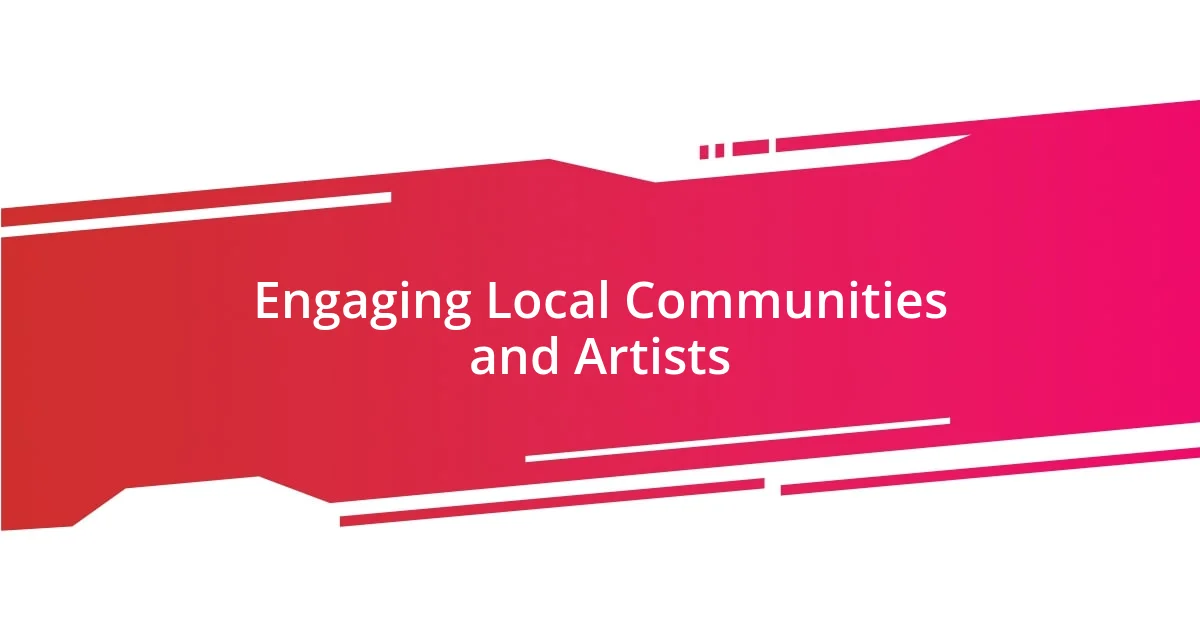
Engaging Local Communities and Artists
Engaging local communities is where the heart of live music events truly beats. I recalled a neighborhood festival I helped promote, and the energy was electric when we involved local artists. Each performance felt like a celebration of our shared culture, which brought so many residents together. It made me wonder—how can we create an environment where everyone feels a sense of ownership in these events?
Collaborating with local artists offers a unique way to build rapport. I once partnered with a rising star in our community, and the turnout exceeded my expectations. The connection was genuine—people were not just attending an event; they were supporting someone they knew personally. I think about how rewarding it is to see familiar faces in the crowd, celebrating each other’s successes and fostering that sense of togetherness.
Also, creating opportunities for dialogue is essential. During one event, I set up a “meet and greet” session with both artists and fans. This moment of interaction allowed fans to share stories, give feedback, and even express their aspirations. I was taken aback by how many attendees opened up about their dreams related to music. It made me realize that every live event could also function as a community-building forum, thriving on shared experiences and aspirations.
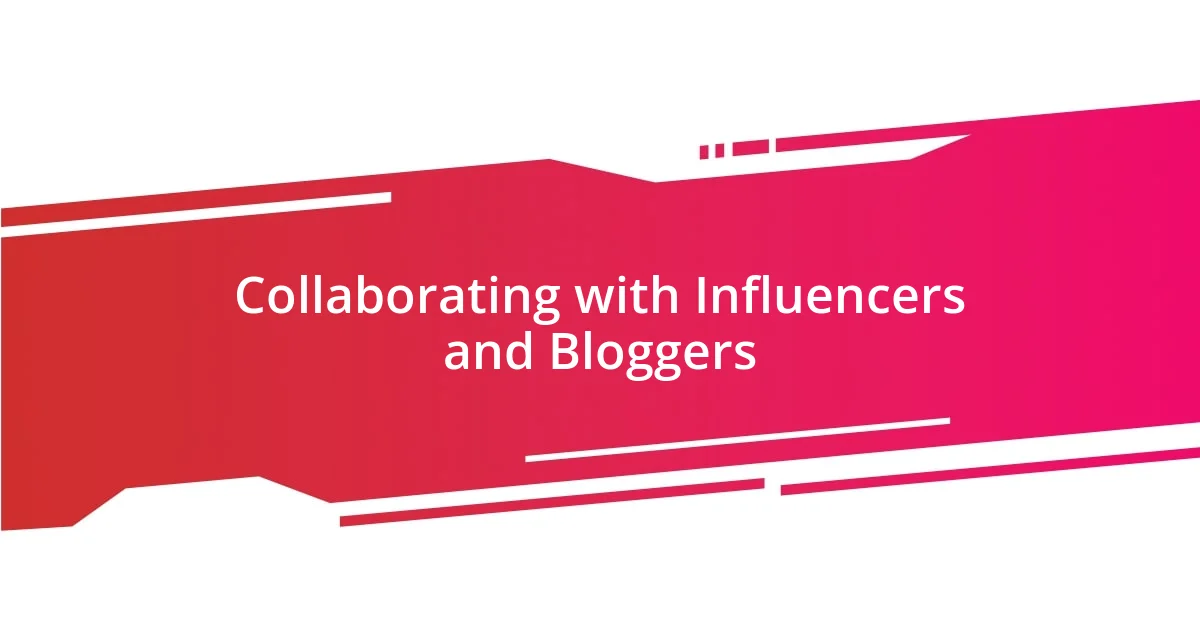
Collaborating with Influencers and Bloggers
I’ve found that collaborating with influencers and bloggers can absolutely amplify the reach of a live music event. When I partnered with a local music blogger for a recent festival, they shared artist spotlights that not only showcased the talent but also built excitement among their followers. It felt great seeing how their genuine passion for music translated into authentic support for the event—almost like a friendship blossomed between the audience and the performers before the first note even hit the air.
One memorable experience was when I enlisted a popular local Instagram influencer. They not only attended the event but also created live stories showcasing the crowd’s energy and the killer performances. I could see their excitement resonating with their followers, which in turn drove ticket sales. This made me realize how influential these voices can be; they create a buzz that feels organic, pulling in people who might have otherwise missed out. Have you ever thought about how these influences shape people’s choices?
Finally, I often think about the importance of reciprocity in these relationships. When I featured a blogger on my promotional content, it created a symbiotic partnership—they shared our event while I highlighted their work. It felt rewarding to cultivate these connections, where both parties truly benefited. This kind of collaboration goes beyond simple promotion; it nurtures a community, making participants feel like they’re part of something bigger. Isn’t that the essence of what we’re all trying to create in the world of live music?
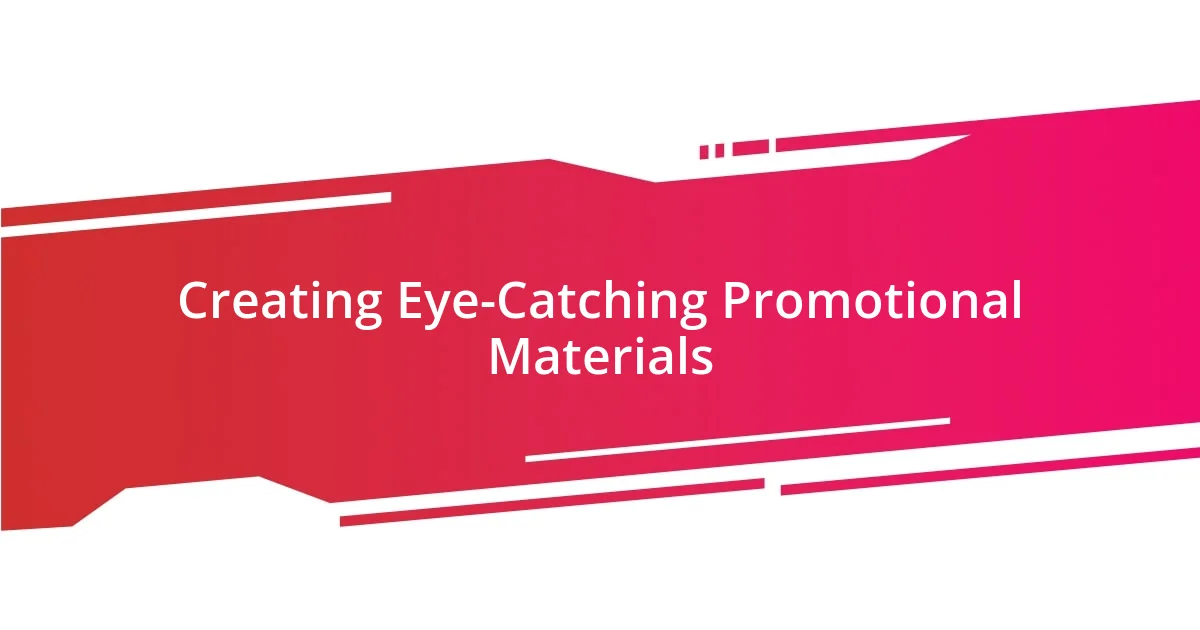
Creating Eye-Catching Promotional Materials
Creating promotional materials that stand out is essential in attracting attendees. I’ve found that vibrant visuals combined with bold typography can really make flyers and posters pop. A striking image can draw a passerby in, sparking their interest instantly. I remember designing a poster for a local jazz night—it featured a captivating saxophonist under the soft glow of stage lights. The way that image encapsulated the essence of the event felt like an invitation to experience something magical.
Words matter too. When crafting messages, I always try to use catchy phrases that evoke emotion. During one campaign, I used the tagline “Feel the Beat, Live the Moment,” and it resonated deeply with potential attendees. I could see it in their eyes that they connected with the idea of enjoying life through music. How powerful is it that a few carefully chosen words can stir excitement and anticipation?
Don’t underestimate the impact of consistency across promotional channels. I learned this the hard way after experimenting with different styles for social media, posters, and banners. The disconnect left some people confused about the event’s vibe. Since then, I ensure that all promotional materials are not only visually coherent but also reflect the same tone and message. After all, creating a unified experience fosters a stronger connection with the audience—an essential ingredient in making your event unforgettable.
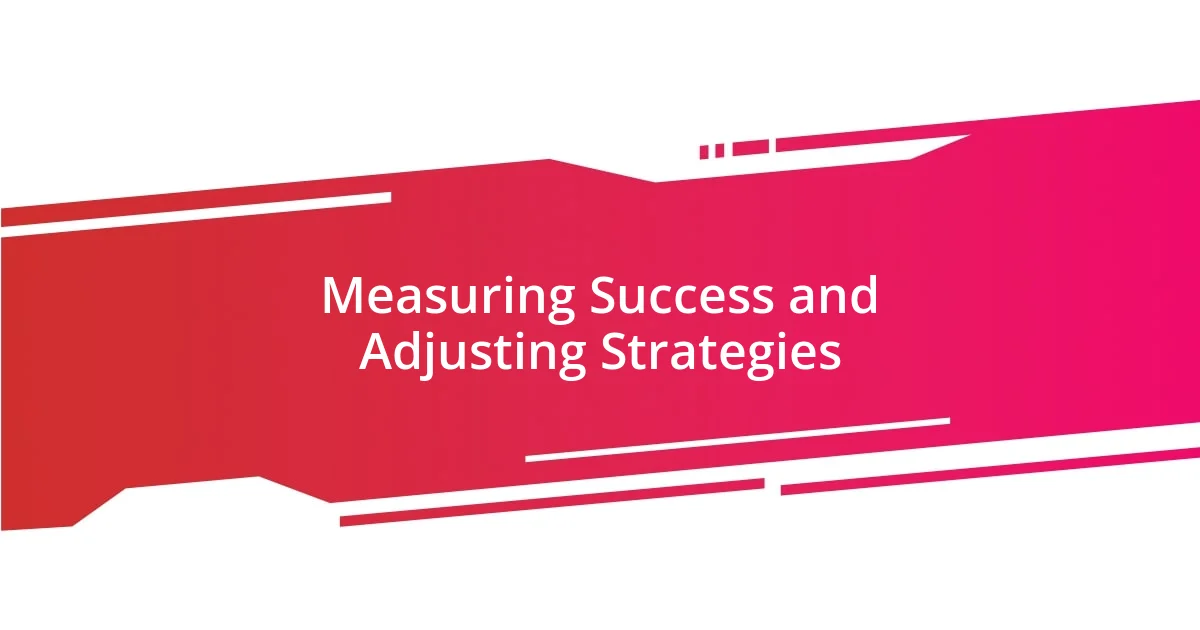
Measuring Success and Adjusting Strategies
Measuring success after a live music event is crucial to understanding what worked and what didn’t. I often look closely at ticket sales, social media engagement, and audience feedback to assess the overall impact. One time, after a smaller gig, I was surprised to see that even modest ticket sales masked incredible social media buzz. Have you ever had a situation where the online chatter felt more significant than the attendance?
Adjusting strategies based on this data is where the magic happens. After analyzing feedback from a recent concert, I realized attendees craved more interaction with artists. In response, I started implementing meet-and-greet opportunities at future events. The impact was profound—audience reviews reflected a newfound energy and connection that made these adjustments invaluable. Is there anything more rewarding than seeing your audience engage more deeply with the music they love?
I also keep an eye on engagement metrics over time. For instance, I once noticed a steady decline in online engagement for one of my regular events. Rather than avoiding the issue, I took it as an opportunity to revamp the promotion strategy, which included fresh collaborations and live Q&A sessions. Not only did this stimulate interest, but it also transformed our events into lively conversations. Have you ever thought about how adapting your approach could uncover new possibilities?
